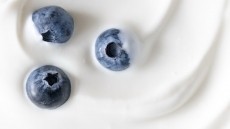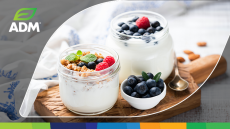Natural pigments from prickly pear get procedural boost
could produce concentrated betalains for use as food colouring,
according to new research from Spain.
Scientists from the Universidad Politecnica de Cartagena report that using their technique yielded pigment recovery of 85.5 per cent, significantly higher than anything previously reported for red beet juices, which ranged from 56 to 65 per cent. The results are published in the American Chemical Society's Journal of Agricultural and Food Chemistry. Until recently, the betalain class of compounds were almost exclusively exploited from red beet. According to a review published in Trends in Food Science & Technology (doi: 10.1016/j.tiffs.2007.04.012), the compounds could soon be colouring a wide range of foods, from desserts to instant meals, and different sources could offer interesting alternatives. While indications are that colours from red beet are currently much cheaper, the red beet has several disadvantages, including unfavourable flavour components, no nitrate accumulation, and the risk of microbe carry-over from the earth. On the other hand, cactus pear also offers other colours, like orange and yellow. Confronted by growing consumer demand for natural and healthy foodstuffs, food makers have increasingly been looking for alternatives to artificial food colours such as Sunset Yellow, Tartrazine and Quinoline Yellow. Market figures confirm the trend. While the European colouring market faces an annual growth rate of just 1 per cent between 2001 and 2008, the colouring foodstuffs market is ripping ahead on growth of 10 per cent to 15 per cent. Not only could the new science help formulators tap into the demand for natural pigments, it also relies on a solvent-free method. The technique may also have some value-added by-products. "With the new procedure reported in this work no solvent extraction has to be added and sugar transformation into ethanol allows for a preparation of more concentrated pigment by a simpler process," wrote lead author "Furthermore, bioalcohol is produced as a byproduct in this process. Therefore, it could be possible to develop an integrated process including betalains concentration and bioethanol production." New procedure for new possibilities The researchers tried three strains of micro-organism to ferment the cactus pear fruit juice, with Saccharomyces cerevisiae var. bayanus AWRI 796 producing optimal results. A temperature of 35 degrees Celsius is reported to produce the best results in terms of sugar consumption and pigment preservation. After this fermentation step, centrifugation was used to separate out the biomass, while the rest was concentrated under vacuum. "Therefore, liquid concentrated betanin was obtained, with low viscosity and being sugar free," stated the researchers. Characterisation of the pigments showed that the pH was 3.4, there were 9.65 grams per litre of betanin, and the colour strength was 10.8. "These values are better than obtained by other procedures," added the researchers. Source: Journal of Agricultural and Food Chemistry Published online ahead of print, ASAP Article, doi: 10.1021/jf703699c "Fermentation of Opuntia stricta (Haw.) Fruits for Betalains Concentration" Authors: M.R. Castellar, J.M. Obon, M. Alacid, J.A. Fernandez-Lopez











